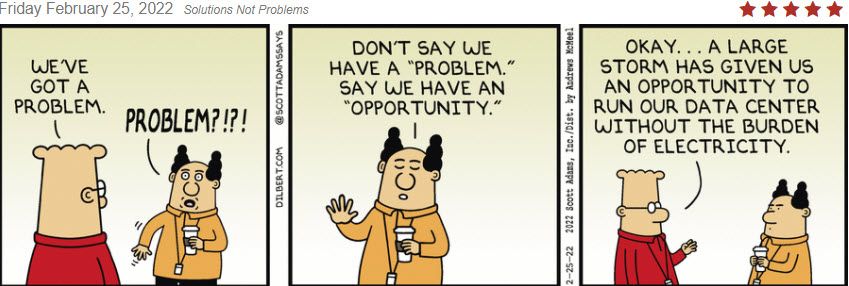The Language of Influence: Problems vs. Goals
As those of you familiar with the language of influence know, how one frames a message has a great deal to do with how the message is interpreted and subsequently received.
A recent Dilbert cartoon by Scott Adams presented a perfect example in three panels. Here it is.

In the Inventory for Work Attitude and Motivation (iWAM) the pointy-haired boss's behavior would be related to the "Goal-Orientation" and "Problem Solving" patterns.
[Note: it is possible that behavior is related to another pattern, in this case "Achievement", or to the interaction between or among patterns. In this case, however, the Goal/Problem basis for the boss's behavior is a real possibility.]
While Adams' works are intended to be humorous, they also often depict real life.
For example, we often cite the example of a senior executive who seems to have an aversion to problems. Once we discovered the behavior and tried framing problems in terms of goals, we found we could have a discussion about the situation without it turning into an argument.
Some who are not familiar with the language of influence might argue that this is a case of a "distinction without a difference". While we've considered that possibility, we deem it more likely that becoming familiar with the role and power of language would provide an alternative view.